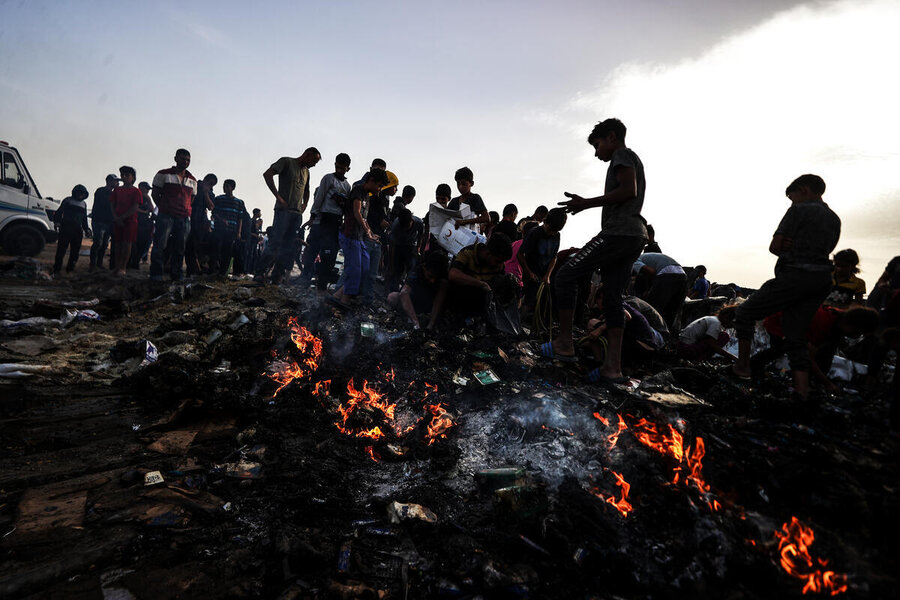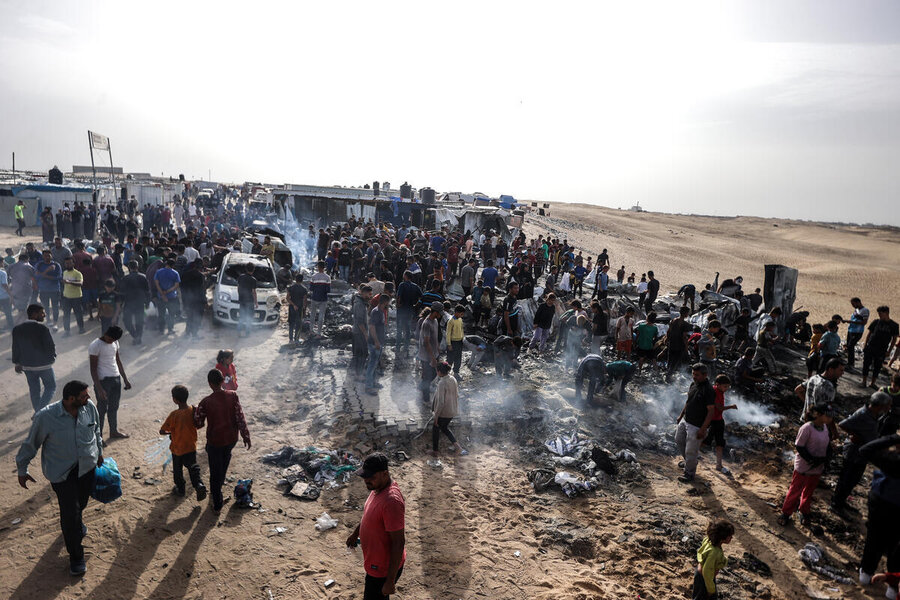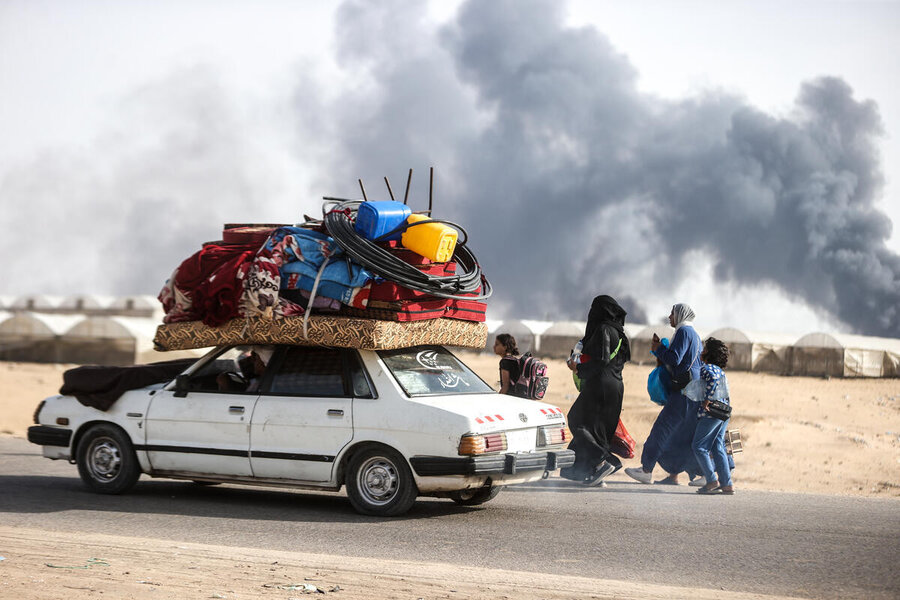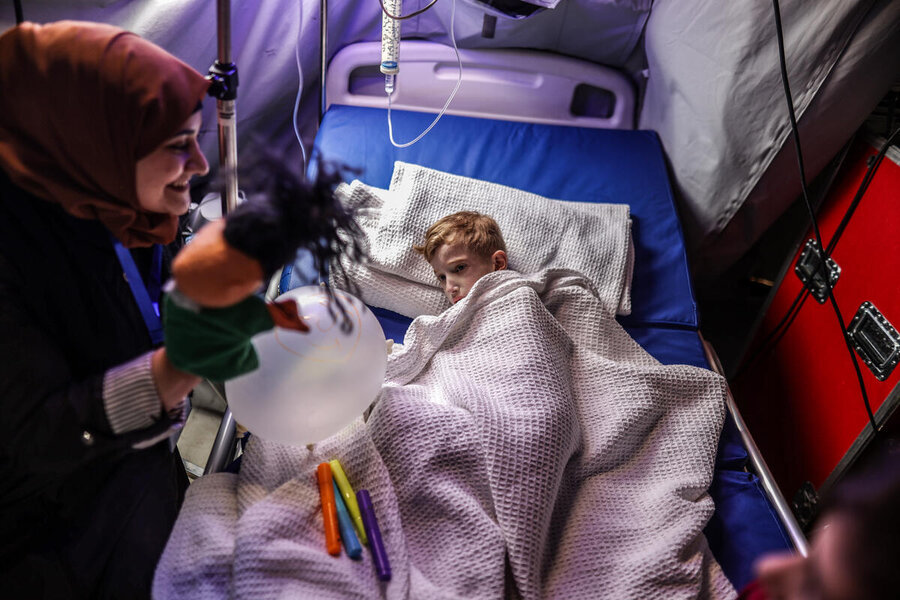Gaza updates: WFP calls for access as UN Hunger Hotspots report highlights global crises

CLICK TO VIEW: LATEST NEWS RELEASES
Updated 5 June (Previous updates: 30 May, 22 May, 17 May)
With limited aid entering through southern and central Gaza, WFP has been forced to provide families with reduced rations – where rations are possible – and prioritize providing hot meals, especially targeting more than 1 million people displaced from Rafah.
The limited rations come as the UN’s HUNGER HOTSPOTS report – jointly published by the WFP and the Food and Agriculture Organization – warns of broader regional ramifications of the crisis, which risk exacerbating the already high food security needs in Lebanon and the Syrian Arab Republic.
Calls to action:
- WFP needs Israeli authorities to facilitate the pickup and delivery of humanitarian supplies entering Kerem Shalom (Karam Abu Salem) entry point.
- Humanitarian organizations need safe and unhindered access to reach all civilians in need across Gaza.
We also need a conducive environment for our partners, be they UN agencies or others to be able access people and scale up.

Exhausted from constant displacement, hunger and fear, people are desperate for the war to end. WFP reiterates UN Secretary-General António Guterres's call for a ceasefire and for the humanitarian space to be protected so we can do our work.
- WFP provided over 7.7 million hot meals in May across central and southern Gaza and Gaza City through a network of 71 community kitchens. WFP is gradually increasing the capacity of kitchens that we partner with and has so far been able to serve up to 430,000 meals in one day.
- In central and southern Gaza, limited distributions of food parcels are taking place providing families with reduced rations. We have been able to resume food distributions, however limited, due to new food parcels received through the port and more recently Kerem Shalom.
The Israeli incursion in Rafah is having a devastating impact on civilians and on humanitarian operations, including WFP’s ability to operate in the south.

- People across Gaza need access to food, clean water and fuel (including for trucking) and generators to pump water. Medical supplies are also urgently required.
- Access has improved in the north of Gaza, with WFP delivering through the Western Erez crossing. We hope we can continue using this route safely, sustainably, and scaled up.
- In Gaza City and the north, WFP has started distributing food parcels and wheat flour to families through UNRWA shelters and cooperating partners, at distribution points and through shops. In May, WFP was able to deliver around 12,000 metric tons of assistance.
While basic commodities are available in markets in southern and central Gaza – despite being highly unaffordable to people – the lack of commercial goods entering through northern crossings means markets in northern Gaza are either empty or food is sold at astronomical prices.

Due to the ongoing conflict, local mobile and internet operators are experiencing network outages due to damaged infrastructure, limited access to fuel, and insecure conditions for carrying out repairs. This makes it difficult to maintain the remaining functional network. Connectivity is worsening as displaced people relocate from Rafah to the northern areas.
- Despite the multiple challenges, WFP managed to provide assistance to more than 1 million people in Gaza in May, albeit with reduced rations due to access constraints and dwindling food stocks. To roll back six months of near-starvation conditions requires a multi-sectoral response that addresses the short, medium and long-term needs.
- WFP is on the ground, working with partners to deliver
- In the north, we are distributing food parcels, wheat flour, hot meals, and supporting bakeries.
- In central areas, we are prioritizing hot meals to reach more people with fewer resources.
- In the south (Rafah), WFP distributed food until we exhausted stocks. With newly arrived stocks from Kerem Shalom, we hope to begin distributions again.
- Two bakeries are operating in Gaza City; one just opened in Jabalia, providing essential bread in the north. Of 17 bakeries WFP has been operating in Gaza, only nine are currently functioning.
- WFP is working hard to adapt to changes on the ground, but we need to shift from responding to immediate, basic needs to a more sustainable response with long-term impact.
- Specifically, we want to shift from providing canned foods, biscuits and ready-to-eat meals to giving people the purchasing power to choose the food their families want, invest in local markets, infrastructure and food systems, to have a tangible impact on peoples’ health and nutrition.
